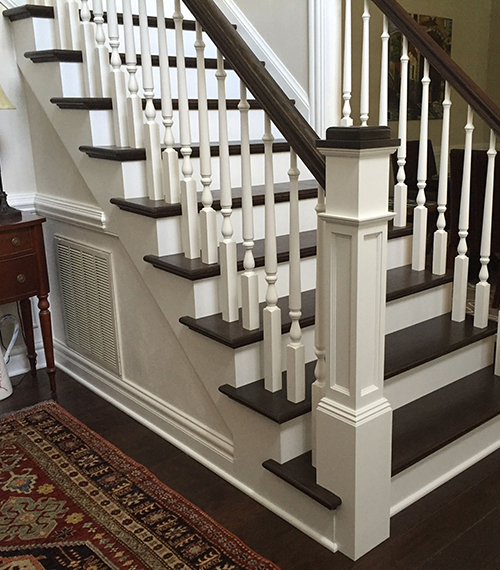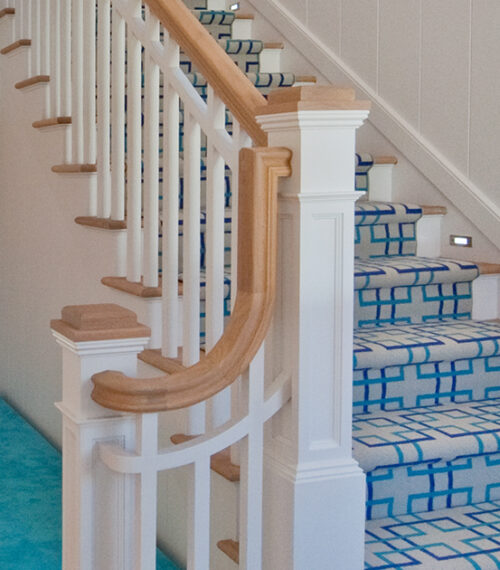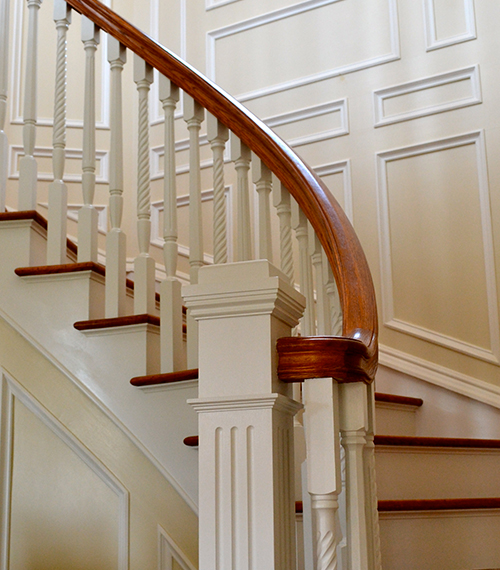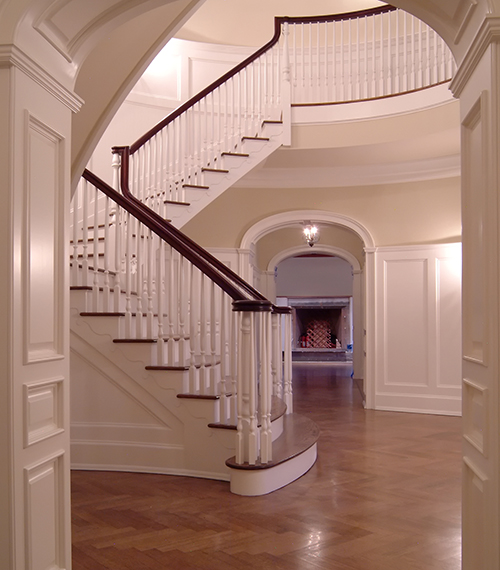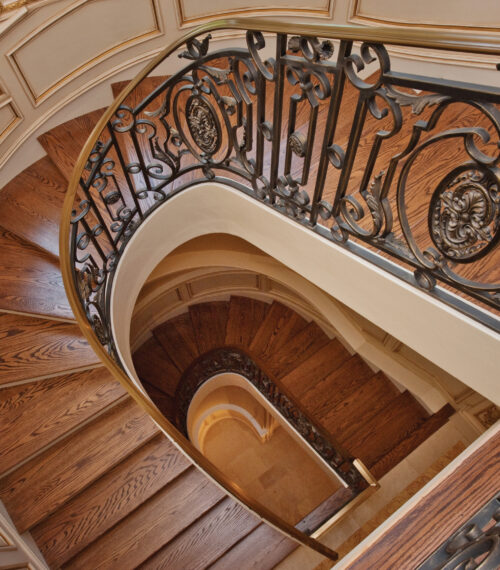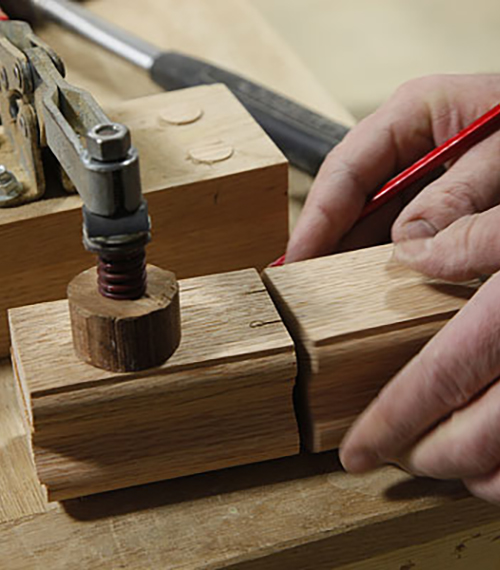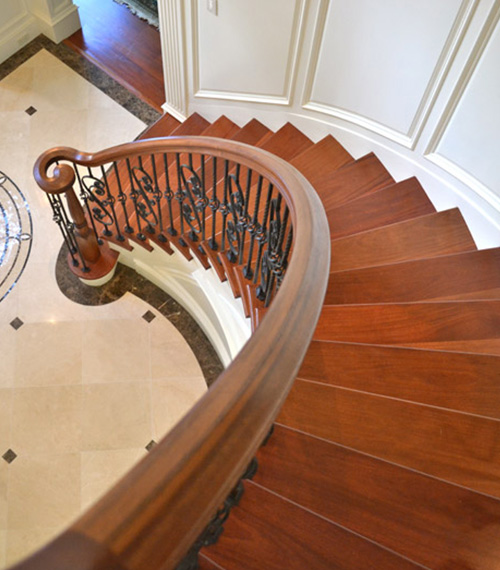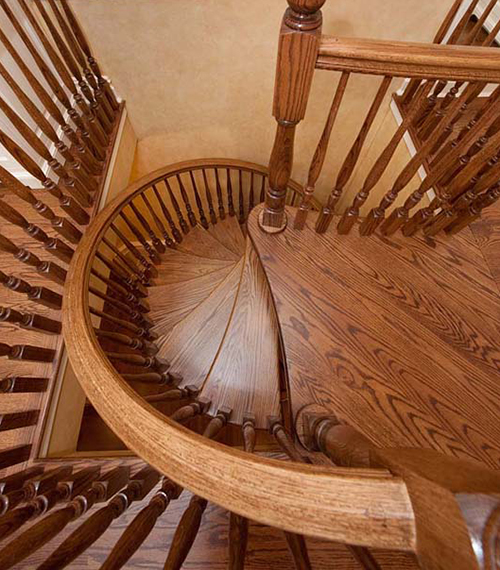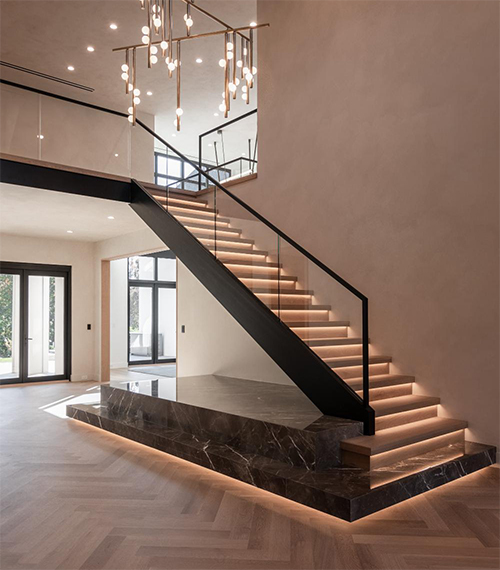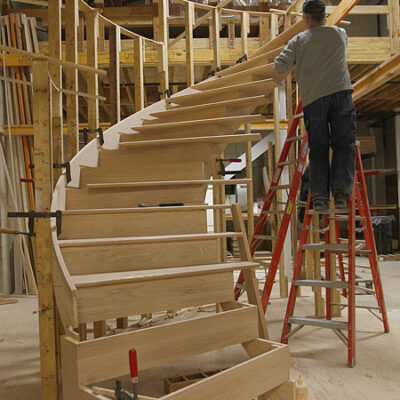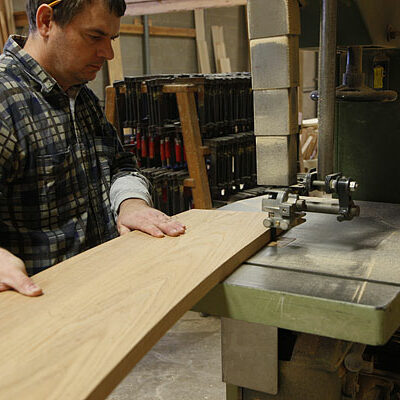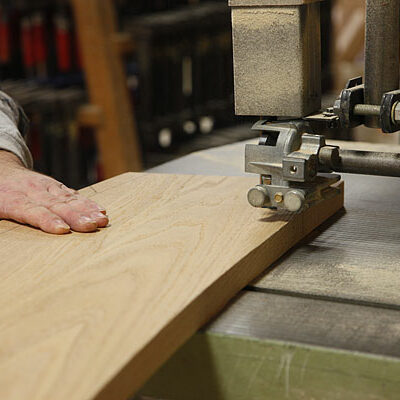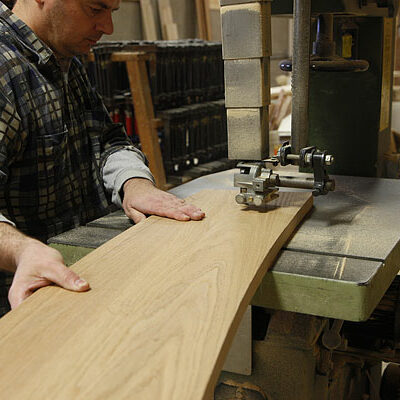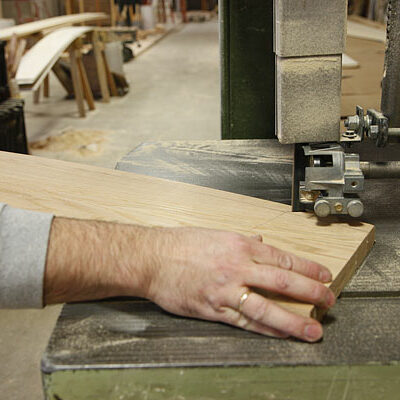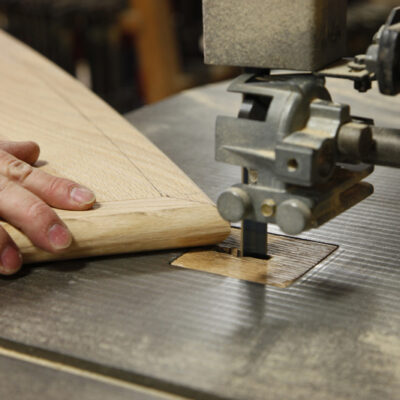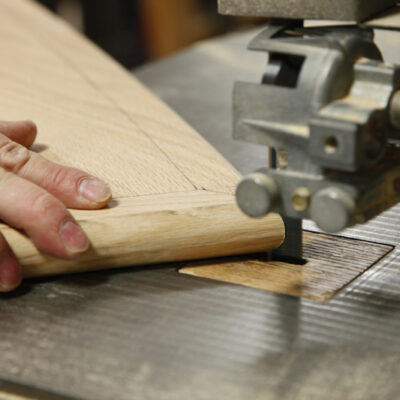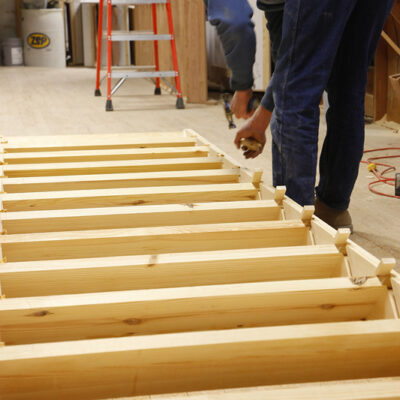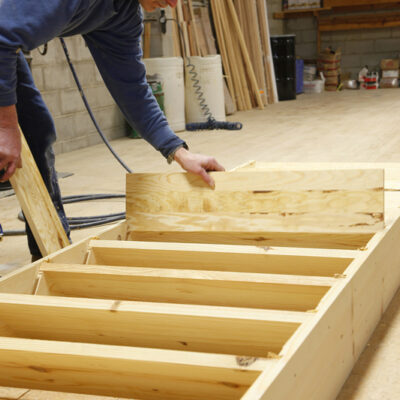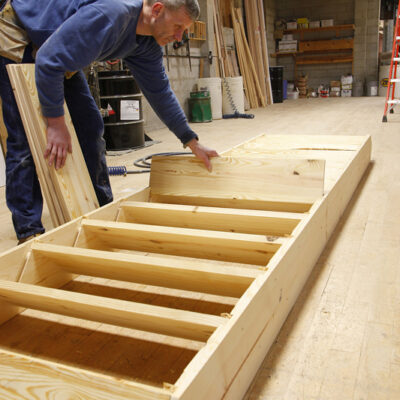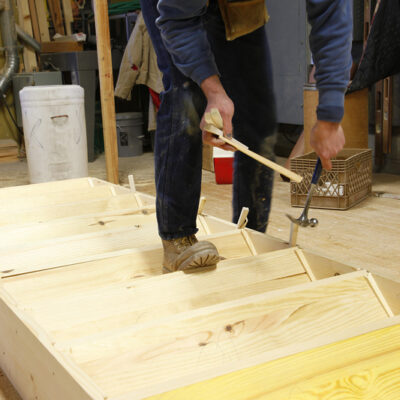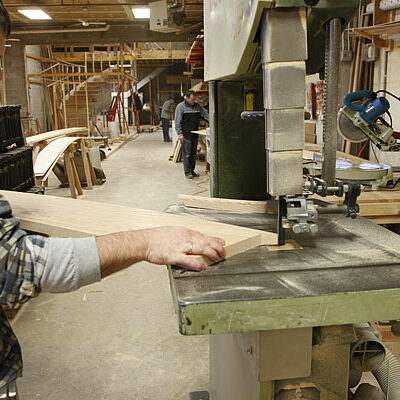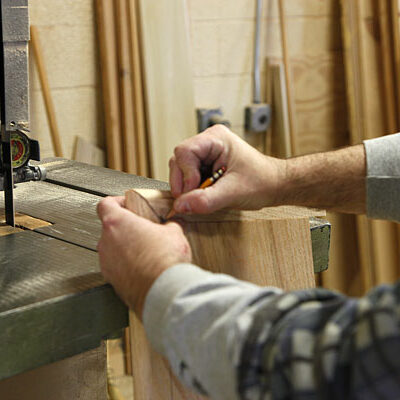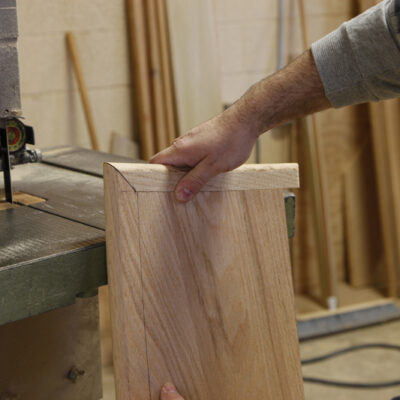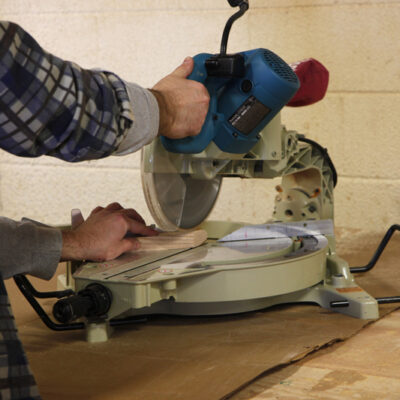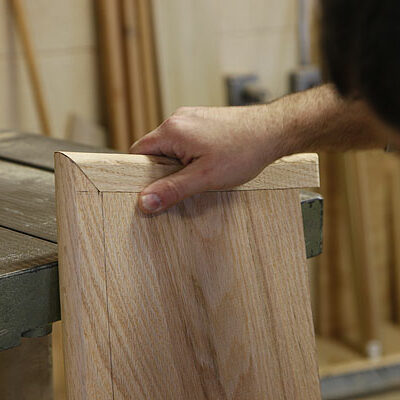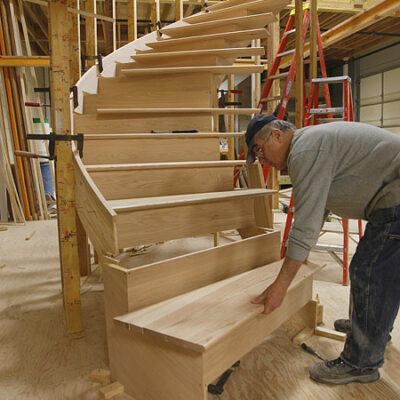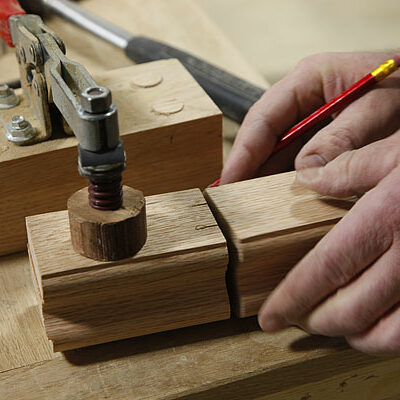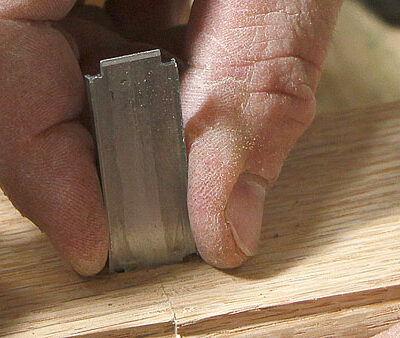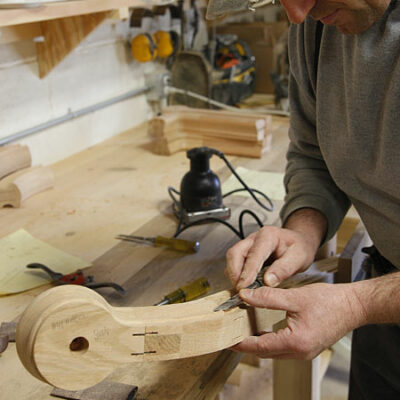This is Carpentry Article
Glen Rock Stair Corp. & John Everett, Wood Turner
About two weeks before leaving for three days of Roadshows in New Jersey last March, I got a call from a friend in North Carolina: “Hey,” he said, “I know this guy in New Jersey who turns 16 ft. columns and tall porch posts on a 19th century lathe!” I couldn’t pass that up.
For the last few years, Tom Brewer, Mike Sloggatt, and I have been traveling around America doing carpentry clinics at local lumberyards and tool stores (www.katzroadshow.com). The experience has been a blessing. We’ve met carpenters and lumberyard staff, manufacturer’s representatives and marketing people from every corner of the country. Regardless of the jokes and criticism we all hear about our industry, every mile of the way we’ve met honest, hardworking, and responsible trades people. In future issues of THISisCarpentry, we’ll try to include profiles of the craftsmen we meet From The Road, like the folks we met at Glen Rock Stair Corp., in Franklin Lakes, New Jersey.
Walking into Glen Rock is like stepping back in time. Sure, they’re using some new machinery, like automated CNC routers for cutting out stringers, but for the most part, they build stairs the old fashioned way. Each carpenter is assigned a specialty task, and a special area of the shop.
Carriages
Dave Jeltes works on a comfortable hardwood floor, assembling carriages. I caught up with Dave as he was fastening the stringers to the treads—all with hand nails: “I like to feel the nails do their job–draw things up tight,” he told me. “That’s something I can’t feel with a nail gun.” He didn’t need pneumatics at the speed he was driving nails.
Unlike most carpenters today, Dave’s hammer is his most-used tool. After securing the treads, he lays the carriage down and drives in wedges before installing the risers. Stepping quickly, he snaps on the wedges with the side of the hammer.
Next, risers are dropped into each mortise. Then the risers are nailed into the back of each tread. After that, more wedges are driven, each with a single hammer blow. And snapped off with the flat of the hammer. There’s no fancy machinery in Dave Jeltes work area, just Dave.
Radius stairs
Everyone has a nickname at Glen Rock—and for good reason. Many of the craftsmen are first generation Polish immigrants. “Richie” (Ryszard Kluk) builds radius stairs in Glen Rock’s new assembly room, where everything imaginable is possible. Even the radius stairs have housed stringers. Once the stringers are mortised, Richie installs the treads. Starting at the top, he slips each tread into a stringer mortise, then marks for the bullnose cut. The two bottom treads are laid out for bullnose returns on both ends.
Nosing returns
“Voytek” (Wojciech Minarczuk) cuts and fits each bullnose return on a bandsaw, starting with the miter. It takes a steady hand to support the workpiece and make a straight cut right through the miter. Next, Voytek makes the cross cut.
And last, he makes the rip, cutting off the bullnose waste. The pre-cut radius caps are fit by eye, trimmed a little on the miter saw, and then the final joint is finished on the band saw. To perfect the miters, Voytek holds the joint tightly closed with his hand, then carefully passes the bandsaw blade through the miter. Timing is critical. Voytek stops cutting precisely at the heel of the miter, then releases the cap before withdrawing the tread. All of the bullnose starter steps are assembled in another corner of the shop, by Faith Noah. She’s the only woman working in a shop full of men, but no one risks giving Faith any guff. Her workbench is set up for one chore, and with every clamp and cawl in place, she makes the job look easy. In a much larger space, Jaroslaw (Jerry) Ziplinski assembles all the handrails. Using power tools is dangerous, and we all try to work safely. Jerry was kind enough to remove the guard on his custom dual-kerf cutter so we could see clearly how the tool operates. Jerry starts by making two cuts in the first piece, then matches the joint and marks locations for mating cuts in the second piece. Jerry joins all of his railing parts with Clamp Nails. Back in the 1980s, we used to fasten all our casing miters with Clamp Nails. I never knew where they came from. Now I do. And they work great for fastening all types of wood joinery. Clamp Nail was started in 1917 near the Chicago area and is still owned and operated by the same family, though sixteen years ago they moved to Phoenix, AZ. Used in everything from furniture to picture frames to cabinet doors, clamp nails are really popular for caskets. The company tends to sell mostly to manufacturers of high-end products.
Jerry likes the fasteners because they’re much faster than rail bolts, and the joints are bulletproof. Clamp Nail have flanges that open on the wide end, so as the nails are driven—wide end first—and the flanges narrows, the joint is drawn tighter and tighter. John Everett took us on a tour of the shop first, then, like saving the dessert, he showed us his workstation last. Tucked into a corner at the back of the shop, beneath a bank of high windows, John operates a lathe that surely dates back to the 19th century. Once powered by steam, and maybe even a water wheel, the lathe pulley and belt are now driven by an electric motor. And that is the only difference between John Everett and generations of wood turners who have used the same machine.
Photos, video, and article courtesy of THISisCarpentry.


